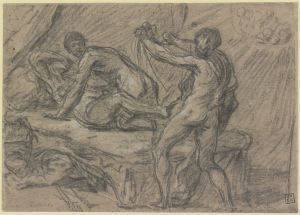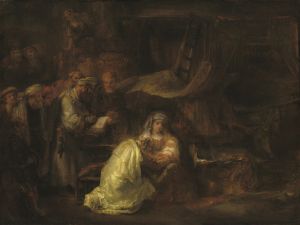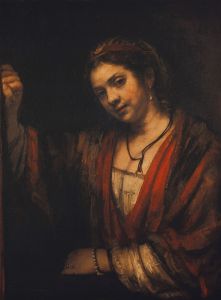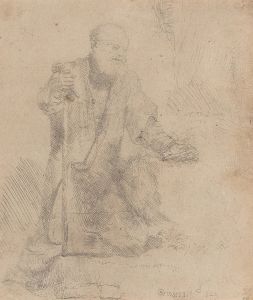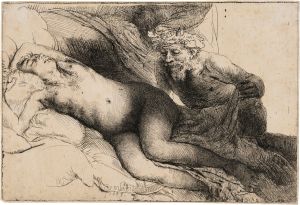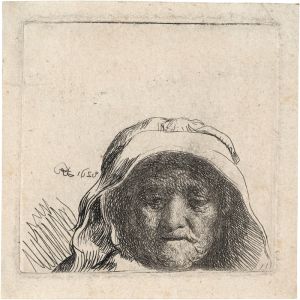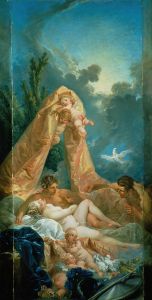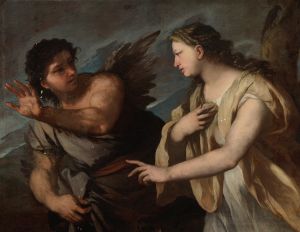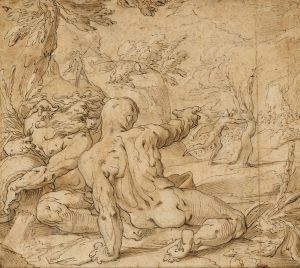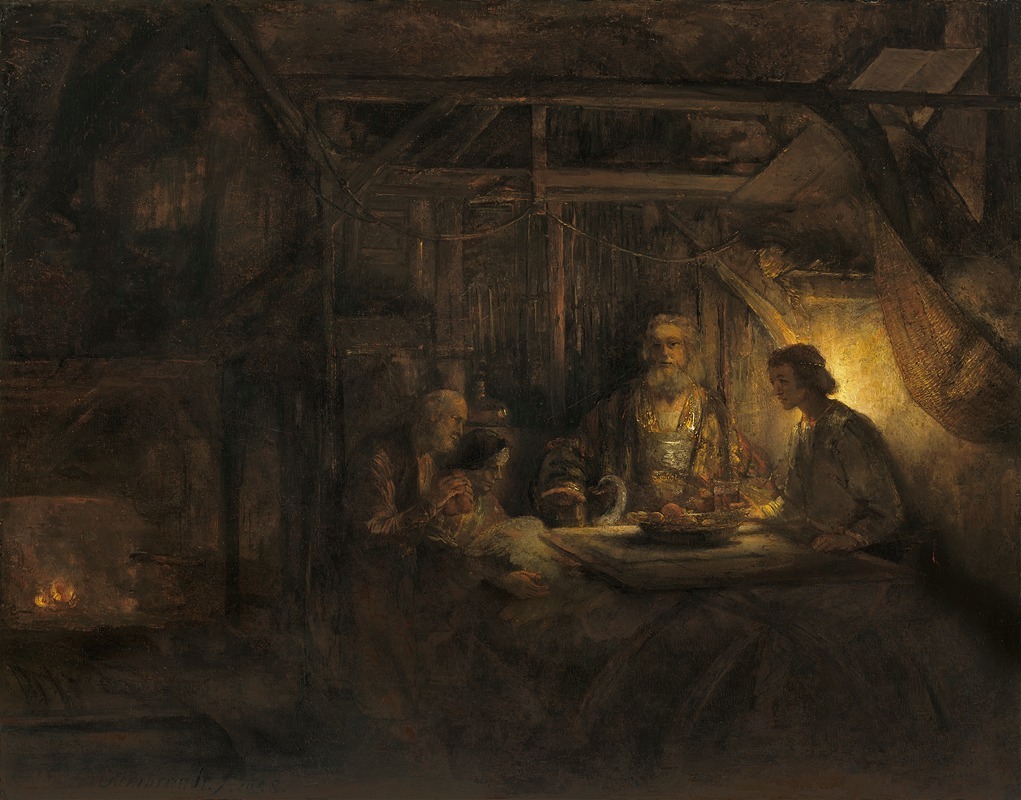
Philemon and Baucis
A hand-painted replica of Rembrandt van Rijn’s masterpiece Philemon and Baucis, meticulously crafted by professional artists to capture the true essence of the original. Each piece is created with museum-quality canvas and rare mineral pigments, carefully painted by experienced artists with delicate brushstrokes and rich, layered colors to perfectly recreate the texture of the original artwork. Unlike machine-printed reproductions, this hand-painted version brings the painting to life, infused with the artist’s emotions and skill in every stroke. Whether for personal collection or home decoration, it instantly elevates the artistic atmosphere of any space.
Philemon and Baucis is a painting by the renowned Dutch artist Rembrandt van Rijn, created in the year 1658. This work is an oil on canvas and is part of Rembrandt's later period, a time when his style had evolved to include a more expressive use of light and shadow, as well as a deeper exploration of human emotion and interaction. The painting is currently housed in the National Gallery of Art in Washington, D.C.
The subject of the painting is derived from Ovid's "Metamorphoses," a classical Latin narrative poem that has been a rich source of inspiration for artists throughout history. The story of Philemon and Baucis is a tale of hospitality and piety. According to the myth, the elderly couple, Philemon and Baucis, lived in a humble cottage in Phrygia. Despite their poverty, they were the only ones in their town to welcome two disguised gods, Jupiter and Mercury, who were traveling through the region. In gratitude for their generosity and kindness, the gods transformed their modest home into a grand temple and granted them a wish. Philemon and Baucis chose to serve as priests in the temple and asked that they die at the same time so they would never have to live without one another. Their wish was granted, and upon their death, they were transformed into intertwined trees.
Rembrandt's depiction of this story captures the moment when the gods reveal their true identities to the couple. The painting is notable for its dramatic use of chiaroscuro, a technique that Rembrandt mastered and used to great effect to convey the emotional depth of the scene. The light in the painting falls on the faces of Philemon and Baucis, highlighting their expressions of awe and reverence. The gods, Jupiter and Mercury, are depicted with a subtle glow, emphasizing their divine nature.
The composition of the painting is intimate, focusing on the interaction between the four figures. Rembrandt's brushwork is loose and expressive, a hallmark of his later style, which allows for a more dynamic and fluid representation of the scene. The textures of the clothing and the humble interior of the couple's home are rendered with meticulous attention to detail, adding to the realism and emotional impact of the work.
Philemon and Baucis is a testament to Rembrandt's ability to convey complex human emotions and narratives through his art. The painting reflects his deep understanding of the human condition and his skill in using visual elements to tell a story. It is a work that continues to resonate with audiences today, offering a glimpse into the timeless themes of hospitality, devotion, and the transformative power of kindness.
The painting is an important example of Rembrandt's mature work and is celebrated for its emotional depth and technical mastery. It remains a significant piece within the collection of the National Gallery of Art, where it is appreciated by visitors from around the world.








